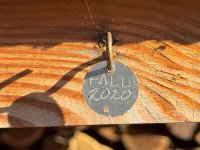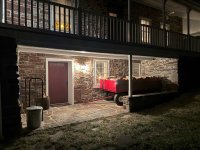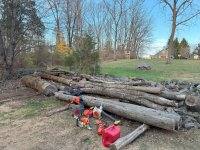That’s an impressive operation WD and it looks to be very efficient. I guess it needs to be with the shear volume of firewood that you go thru.
Here, up near the Canadian border about half way between Lake Erie and Lake Ontario in WNY, we only use an average of (6) face cords per season to provide most of the heat for our 2000 sq ft, well-insulated 1980’s ranch. I can usually make that mostly thru the summer in my spare time.
I used to enjoy doing firewood in the winter also, back before “climate change” in the years when our ground would freeze up good, but that was more than 20 years ago. It just causes too much damage to the ground from rutting to try and do it in the cooler months in most recent years.
This year has been an exception though, the worst late season drought that I can recall. We have been almost without any fall rains this year. My little pond is almost dried up and there is no standing water anywhere in the fields.
Our farm is particularly low lying and the dominant species was ash. EAB has taken all of them and about 90 % of what I’ve been burning the last 15 years has been ash. I’m getting pretty tired of burning that now, and I will be thankful when we have finally seen the last of it (I’m guessing in maybe 4 more years).
I don’t try to cut the standing dead ones because it’s way too risky. I do try to get on the easily accessible ones quickly after they fall if the ground is dry enough though, because they do get bad quick, after they hit the ground.
Yesterday, I was out hunting in a tree stand built in a large poplar and I noted a dead ash about 20” at the base was leaning against it. The stand was about 10 ft up and I tried rocking the ash to fell it manually, but was unable to loosen it from the upper branch and vine entanglement.
It’s going to be a bit of a project, but I’m thinking of going back there Sunday, after church, and attaching a chain as high as I can reach. I’ll attach a 1/2” wire rope to that chain and run it thru a snatch block attached to a tree further down the hedge row, then run it back to my tractor, the other way. The ash should fall easily towards the snatch block.
It looked like some nice well seasoned wood and I’ll chunk it up when it’s safely on the ground and add it to the growing pile in my splitter shed. I plan on working on that over the one week deer hunting break that we have over Christmas.
There is only room for another face cord or so in my 24 face cord capacity woodshed. This all looks like it will be dry enough to burn right away, so I’ll leave the excess in the splitter shed and burn it first, rather than last like usual.
While I was rocking that tree yesterday, I kept my head up watching for falling widowmakers. The snatch block, wire rope and tractor should be a safe way to get it down on the ground.
Hopefully, I can locate my snatch block and wire rope. It’s going to be fun to get a little break from deer hunting (haven’t even seen one since gun season started). I got some spare time this weekend, because a lake effect snow storm took out our planned trip up to the in-laws place, up in the Adirondacks.
They get it from Lake Ontario. Where we are is just a tad north of the Lake Erie snow belt. They are a little north of the typical Lake Ontario snow belt, but the winds have pushed the current storm north. They are about half way thru getting a predicted 3-5 feet of the cold white stuff right now.






